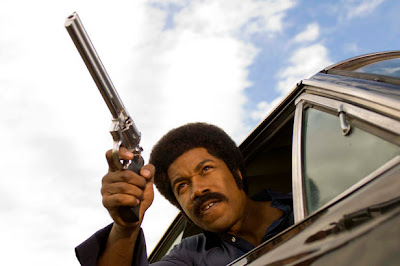
In 2003, Charles Ferguson took his Doctorial degree in political science from M.I.T. and his 13 years of experience as an independent consultant for various U.S. government agencies and technology firms and applied them to a new line of interest, documentary filmmaking. A few years later, he released his debut film, No End in Sight: The American Occupation of Iraq, an investigation of mistakes made by the Bush administration during the two-year period following the U.S. invasion of Iraq. Now, Ferguson is targeting Wall Street and the global economic crisis of 2008 in his sophomore film, Inside Job, narrated by Matt Damon.
The film starts with a comparison to the similar economic situation in Iceland. From there, Ferguson breaks down his theory like any trained lawyer and gives us a rundown of events presented in chronological order. Much like Michael Moore’s 2009 film, Capitalism: a Love Story, Ferguson’s Inside Job also traces the root of our current economical fiasco back to de-regulations made by the Reagan administration. Yet, where Moore only touches upon this brief factoid then reverts to his usual antics, Ferguson takes the time to explain his theory, back it up with data, conduct intelligent interviews with the parties involved, and provide testimony from financial experts around the globe.
According to Ferguson, this is what happened: Reagan’s administration de-regulated the banks and repealed the Garn-St. Germain Act, which lead to the lead to the S&L crisis. Next up was Clinton’s administration and their repeal of the 1933 Glass-Steagall Act, which allowed the consolidation of commercial banks, investment banks, securities firms, and insurance companies. His regime also enacted the Commodity Futures Modernization Act, banning all regulation of financial derivatives and exempted them from anti-gambling laws. Bush’s administration followed up with more de-regulation, accounting fraud, predatory lending, credit default swaps, and an international Ponzi scheme. By the time 2008 hit, Obama’s administration was facing the collapse of major financial institutions, record foreclosures, excessive unemployment, and resorted to bank bail-outs.
Ironically, the scariest part of the problem isn't isolated in Washington or on Wall Street. The corruption has now seeped into the study of economics itself. Presidents of Ivy League universities are sitting on boards of the same financial institutions that pay Wall Street “financial experts” to teach at their business schools and endorse de-regulation. It’s become an institution of who’s paying who to say what.
In other words, Wall Street had become one big frat-party with all the accompanying drugs, strippers, booze, and criminal activity being financed at the country’s expense. Literally. Unfortunately, every party must come to an end; and, that it did in September of 2008 when reality finally came knocking on the door in the form of a global economic crisis. Yet, the banks are still fighting reform? Why? The last time any Wall Street executive was punished for illegal banking activities was in1990.
Since then, they’ve managed to avoid the inconvenience of accountability simply by reshaping the laws (via lobbyists) to suit their own personal gains and turned the U.S. into a Plutocracy. President Obama called for reinstating financial regulation during his campaign; yet, he chose to employ the very same economic advisors who engineered this mess from the beginning. But before you go blaming Democrats or Republicans for the failing economy, don’t forget that both parties are at fault.
Obama’s economic advisors belong to the same greedy Wall Street fraternity as Bush’s advisors and Clinton’s advisors. In essence, it’s no longer a matter of voting. Even though, 99% of the population is more than enough to sway any vote, the fact remains that you can’t vote someone out of an office they were never elected to run in the first place. So, what’s the solution? Ferguson doesn’t offer one.
Overall, Inside Job is an informative look into the reasons why our economic crisis reached global proportions. Aesthetically, the film is mostly constructed of talking head interviews, which Ferguson still manages to conduct in an entertaining way. Even I had to laugh when a Columbia Business School “professor” attempted to weasel out of Ferguson’s uncomfortable questions by claiming that he “had to go re-edit a textbook.” I’m betting he’s not going to add the suggestion to invest in a ticket to see Inside Job and learn the real reasons why we all went broke.
© Left From Hollywood 11/5/10
.jpg)




.jpg)



